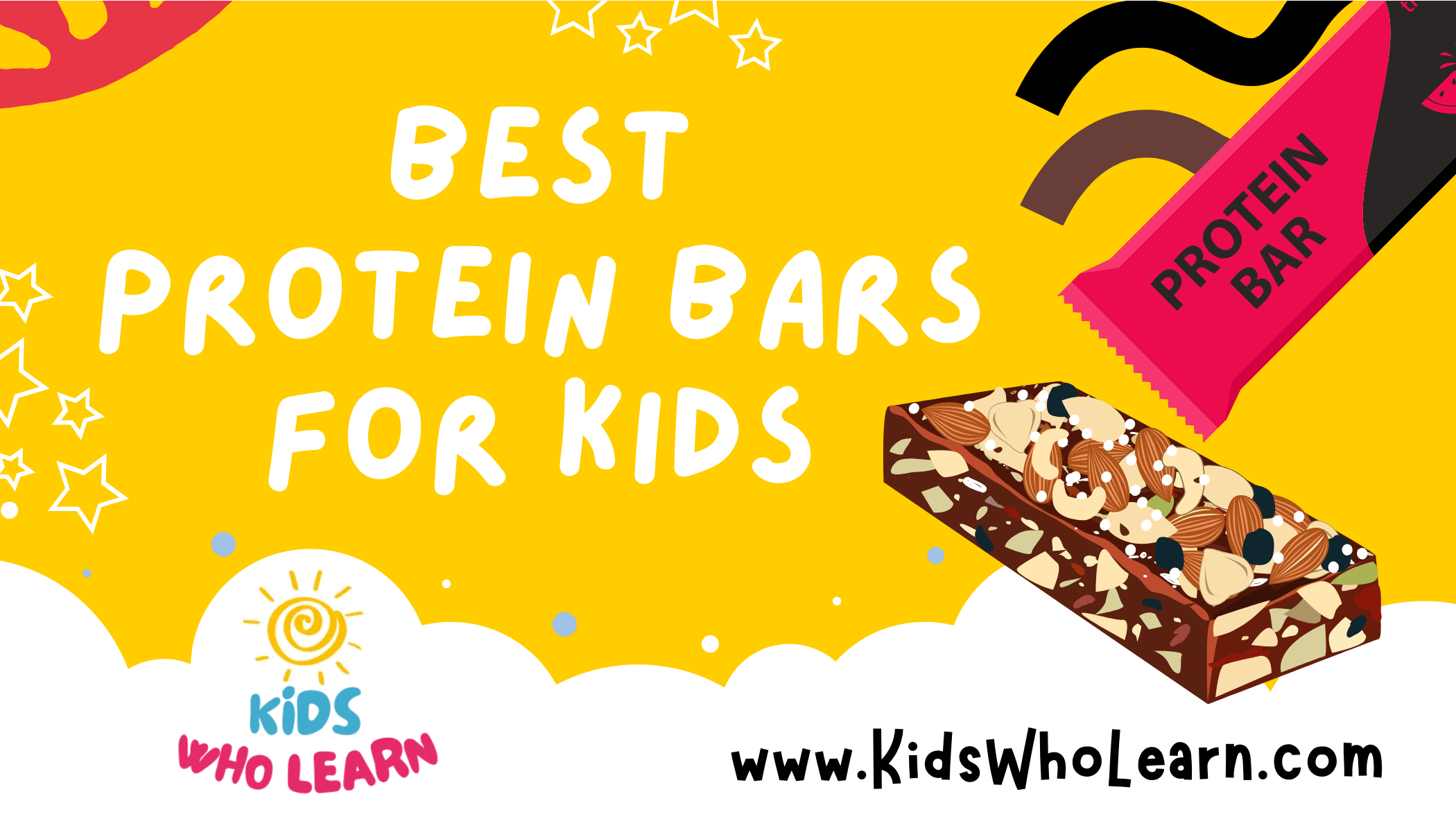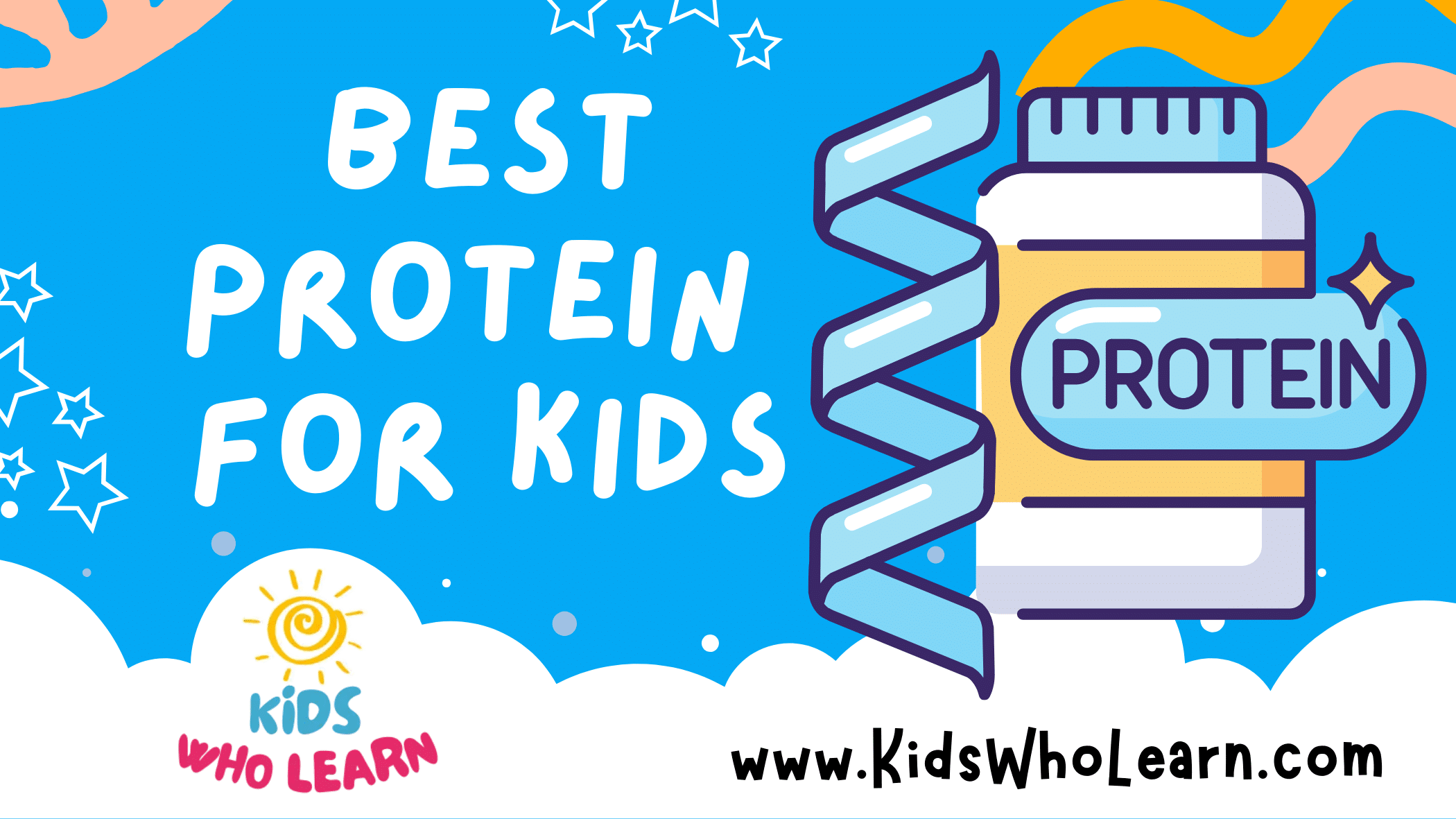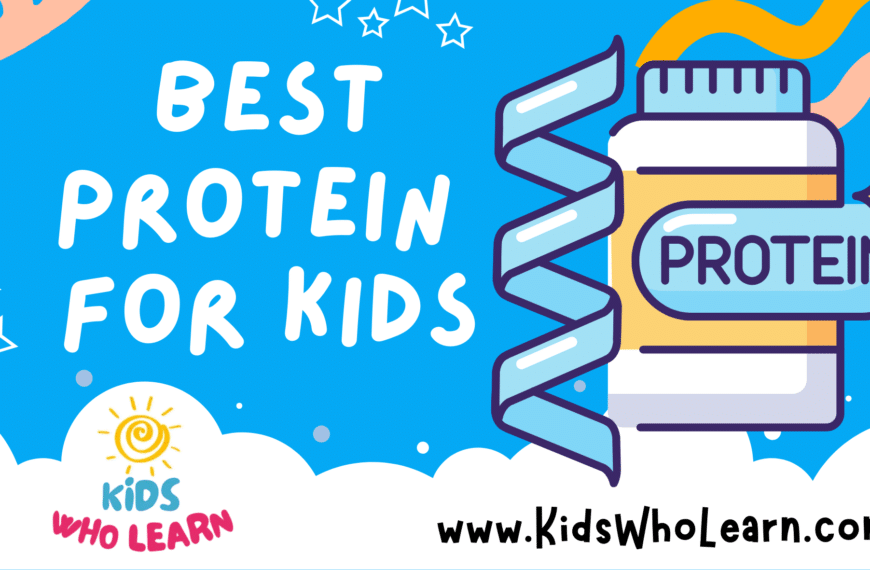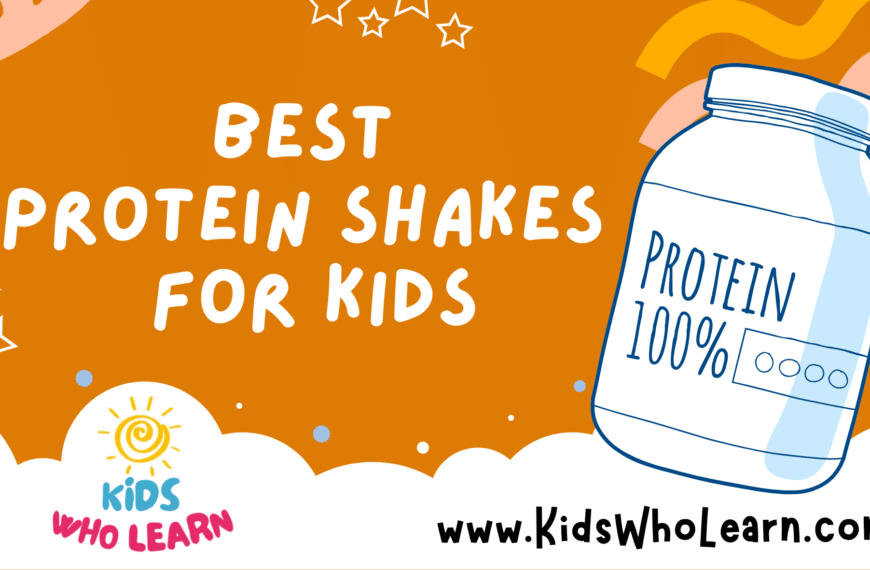Protein bars can be a convenient snack for kids that are both nutritious and delicious. When it comes to selecting the best protein bars for your children, it’s important to consider not only taste but also the nutritional content to ensure they are getting a healthy balance of protein, carbohydrates, and fats.
With a myriad of options on the market, it can be overwhelming to choose the right protein bars for kids. Looking for bars with wholesome ingredients, low sugar content, and an appropriate amount of protein for a child’s diet can make the selection process easier. It’s also beneficial to consider any dietary restrictions or allergies your child may have.
Healthy consumption practices are important as well. Protein bars should complement a balanced diet, not serve as a replacement for meals. Understanding how and when to incorporate these bars into your child’s dietary routine can help maintain a healthy lifestyle and provide the energy they need throughout the day.
Key Takeaways
- Protein bars are a handy snack that should be nutritious and appealing to kids.
- Choosing the best protein bars involves assessing nutritional content and ingredient quality.
- These bars should supplement a balanced diet, not replace regular meals.
Understanding Protein Bars for Kids
When selecting protein bars for kids, it’s crucial to consider their nutritional makeup, the quality of protein used, and how these factors support a child’s growth and development. Features that make them kid-friendly, such as taste and packaging, also play a significant role in ensuring they fit into a healthy snack routine.
Defining Protein Bars
Protein bars are convenient snacks designed to provide a significant amount of protein in a small, portable package. For kids, these bars should be sourced from high-quality protein while being lower in added sugars and unhealthy fats.
The Importance of Protein
Protein is fundamental for your child’s muscle growth, tissue repair, and immune function. Kids who lead active lifestyles may require additional protein, which can be conveniently supplied by protein bars tailored for their specific needs. Daily protein requirements vary by age and activity level.
Balancing Nutrients for Growth and Development
It’s essential that the protein bars for kids are well-balanced with other nutrients:
- Carbohydrates: They provide energy for growing bodies.
- Fats: Necessary for brain development, but should be healthy sources like nuts and seeds.
- Fiber: Supports digestive health.
- Vitamins and minerals: Crucial for overall development.
| Nutrient | Role in Growth & Development |
|---|---|
| Protein | Supports muscle and tissue |
| Carbs | Provides energy |
| Fats | Aids in brain development |
| Fiber | Enhances digestive health |
| Vitamins & Minerals | Essential for bodily functions |
Identifying Kid-Friendly Features
Choose protein bars that appeal to kids through taste and packaging while being mindful of their dietary needs. Look for:
- Natural sweeteners instead of high fructose corn syrup
- Flavors that children enjoy, like chocolate or peanut butter
- Kid-sized portions to prevent overeating
- Fun, eye-catching packaging that encourages them to choose these healthy snacks over less nutritious options
Nutritional Considerations
When selecting a protein bar for children, it’s essential to examine the nutritional content to ensure it supports their growth without adding unnecessary additives or sugars. Proper balance of fiber, healthy fats, and awareness of potential allergens are crucial for a well-rounded snack.
Sugar Content and Healthier Alternatives
Protein bars often contain added sugars to improve taste, which can lead to excess calorie intake and impact dental health. Organic bars may have lower added sugar amounts. Look for bars that use natural sweeteners such as stevia, or those that have fruits to add sweetness without the need for refined sugars.
Role of Fiber and Healthy Fats
A protein bar should provide a good source of fiber and healthy fats, which are critical for digestion and prolonged energy. Aim for bars that contain ingredients like nuts or seeds, which are natural sources of fats and provide vitamins and minerals. Read the label to ensure fats are not from trans fats but rather from healthy sources.
Avoiding Additives and Preservatives
Choose bars with a minimal list of ingredients, focusing on those without artificial colors, flavors, or preservatives. Bars containing mainly organic ingredients are often free from unnecessary additives. It’s also beneficial to avoid bars with soy or corn syrup, which are common sources of additives.
Allergy Awareness: Nuts, Gluten, and Dairy
Always check for any common allergens such as nuts, gluten, or dairy. If the child has an allergy to eggs, confirm the protein source in the bar doesn’t include egg-based ingredients. Furthermore, look for labels such as “gluten-free” or “dairy-free” if sensitivities are a concern.
Selecting the Best Protein Bars
When choosing protein bars for children, it’s important to consider the ingredients and nutritional content to ensure they’re getting a healthy, well-balanced snack.
Spotting Quality Ingredients
You want to find protein bars that contain whole food ingredients like nuts, seeds, and dried fruits. Quality protein sources such as whey protein or organic brown rice protein should be high on the ingredient list. Avoid bars with excessive additives and preservatives to ensure what your child is consuming is as natural as possible. Opt for bars with real food pieces, such as almonds or cherries, to add both flavor and nutritional value.
Opting for Organic and Non-GMO Options
Choosing bars that are certified organic and non-GMO can be a healthier option, as they are less likely to contain synthetic substances that you may wish to minimize in your child’s diet. Here’s a quick checklist to help you:
- Organic Certification: Confirms the ingredients were grown without synthetic fertilizers or pesticides.
- Non-GMO Project Verified: Assures that the ingredients are not genetically modified.
Understanding Labels: Macronutrients and Ingredient List
Reading labels is crucial to ensure a good balance of macronutrients suitable for a child’s diet. The bar should have a healthy balance of proteins, carbohydrates, and fats. Look for bars with nutritious macronutrient profiles, such as:
- Protein: 5-10 grams, ideal for supporting growth without being excessive
- Carbs: Whole grain sources or natural sugars from fruits
- Fats: Healthy fats from nuts like almonds or seeds
Additionally, if your child has specific dietary needs, such as gluten-free, nut-free, dairy-free, or avoiding certain allergens like peanut butter, check the labels carefully for these designations.
Popular Protein Bars for Kids
When considering protein bars for your kids, it’s important to choose options that are nutritious, taste great, and are formulated to meet the needs of growing bodies.
Specific Brands and Their Offerings
-
Happy Kid Fruit and Oat Bars: These bars are crafted with wholesome oats and a variety of fruits, meeting the sweet tooth needs of your child with a nourishing twist.
-
Happy Tot Fiber & Protein Bars: Tailored for toddlers, these bars offer a balance of fiber and protein essential for your little one’s development.
-
Health Warrior Chia Bars: Packed with chia seeds, these bars are a good source of omega-3 fatty acids and fiber, making them a smart choice for kids’ snacks.
-
LÄRABAR Mini: With simple ingredients like dates and nuts, these mini bars provide nutrients and energy in a small, kid-friendly size.
-
KIND Bar Mini: These bars offer a blend of nuts and seeds in a smaller form, perfect for kids who crave a crunchy snack.
-
ThunderKids Bars: Made without artificial additives, these bars are designed to provide clean, sustained energy for active kids.
-
Skout for Kids Bars: Organic and non-GMO, Skout bars are a safe bet for parents looking for a healthy snack for their children.
-
Zing Minis: These mini protein bars are made with real ingredients and provide a balanced macronutrient profile suitable for kids.
-
88 Acres Seed Bars: Seed-based nutrition comes to the forefront in these bars, ideal for kids with nut allergies or sensitivities.
-
Junkless Granola Bars: As the name suggests, these bars are free from junk, focusing on simple and natural ingredients.
-
Zeek Kids Bars: Designed with kids in mind, Zeek bars are a source of protein without compromising on taste.
-
Health Warrior Organic Pumpkin Seed Protein Bars: These bars are a unique option with organic pumpkin seeds as the primary source of protein, offering a different nutrient profile.
-
Raw Rev Glo Protein Bars: With a combination of plant-based proteins, these bars are a good fit for families prioritizing vegan nutrition.
These bars typically use ingredients like dates and egg whites to create a satisfying texture and seeds for additional nutrients. It’s always advisable to read the nutrition labels carefully to ensure the bars fit into your child’s diet.
Healthy Consumption Practices
When choosing protein bars for your children, it’s crucial to incorporate them into their diet in a way that supports their nutritional needs without overconsuming calories or sugar.
Integrating Bars into a Balanced Diet
Your child’s diet should be a mosaic of various nutrients. Protein bars can be a part of this diet, provided they are high in essential amino acids and low in sugars. Protein bars should complement whole foods, offering a portable option for nutrients, rather than replacing meals entirely. They should also not echo a candy bar in sugar content. Instead, look for options that provide a balance, coupling a moderate calorie count with valuable nutrients like potassium.
Snack Timing and Portion Control
Snack timing is integral to avoid disrupting your child’s natural hunger cues and to maintain steady glucose levels throughout the day. A protein bar can serve as a mid-morning or afternoon snack rather than immediately before meals.
Regarding portion control, it’s important to select the size of the protein bar according to your child’s age and activity level to prevent excessive calorie intake. Here is a quick reference for appropriate sizing:
| Age Group | Recommended Protein Bar Size |
|---|---|
| 4-8 years | Half or small bar (< 100 calories) |
| 9-13 years | Standard bar (around 150 calories) |
| Teens | Standard or large bar (up to 200 calories) |
Carefully read labels to ensure your child receives a nutrient-dense snack low in sugar, as this will support their energy levels without the sharp spikes associated with high-glucose snacks.
Additional Considerations
When choosing protein bars for kids, it’s essential to consider their specific taste and texture preferences, how these bars affect digestion, and strategies for accommodating picky eaters.
Evaluating Taste and Texture Preferences
Your child’s enjoyment of a protein bar greatly depends on its taste and texture. Taste is a primary factor; children will likely prefer bars with a sweet or familiar flavor. The texture is equally important—bars should be chewy and easy to eat, not overly hard or grainy. It’s imperative to look for bars that strike the right balance between being palatable and nutritious.
Tabulated example of tastes and textures kids might like:
| Taste Preferences | Texture Preferences |
|---|---|
| Chocolate | Chewy |
| Vanilla | Soft |
| Fruit flavors | Non-gritty |
| Peanut butter | Moist |
The Role of Protein Bars in Digestion
Protein bars that are high in protein and incorporate natural ingredients can be beneficial for your child’s digestion. Bars containing fiber can support digestive health but verify that the fiber sources are kid-friendly and non-irritating to sensitive stomachs. Avoid bars with excessive artificial sweeteners, as these might disrupt digestion.
List of digestion-friendly attributes to look for:
- Fiber content: Aim for natural fiber.
- Protein source: Look for easily digestible forms like whey or plant-based proteins.
- No artificial sweeteners: These can cause digestive discomfort.
Addressing the Concerns of Picky Eaters
Picky eaters may be averse to certain flavors or textures, which makes selecting the right bar challenging. Options that contain natural ingredients and resemble familiar snacks in taste and appearance tend to be more acceptable. Use the protein bar as an opportunity to introduce new flavors gradually.
Recommendations for picky eaters:
- Mild flavors: Start with simple, recognizable flavors.
- Fun textures: Seek out bars with inclusions like crispies or chocolate chips that can make the texture more appealing.
- Visual appeal: Attractive packaging can entice children to try new bars.
Frequently Asked Questions
When selecting protein bars for your children, it’s essential to consider nutritional content, ingredient quality, age appropriateness, homemade options, and the benefits versus potential drawbacks. This section addresses common inquiries to help you make informed choices.
What are the nutritional considerations when choosing protein bars for children?
You should look for protein bars with a balance of proteins, carbohydrates, and fats, ideally with a modest amount of natural sugars and a focus on whole food ingredients. High fiber and low added sugar content are also important factors to keep in mind.
How do different protein bar ingredients impact a child’s health?
Ingredients such as whole nuts, seeds, and oats generally provide sustained energy and essential nutrients. In contrast, high amounts of added sugars and artificial additives may contribute to energy spikes and crashes, and could have a negative long-term impact on a child’s health.
What age is appropriate for children to start consuming protein bars?
Children can usually start consuming protein bars in moderation around the age of 4 or 5, but it’s crucial to ensure the bars are size-appropriate and don’t pose a choking hazard. Always supervise younger children while they eat protein bars.
How can homemade protein bars be made suitable for kids’ snacking?
Homemade protein bars can be made with natural ingredients like nut butters, honey, oats, and protein powders suitable for children. Preparing them at home allows you to control portion sizes and nutritional content to tailor them specifically to your child’s dietary needs.
What are the benefits and potential drawbacks of giving protein bars to children?
Protein bars can be a convenient source of nutrients for active children, especially when whole food meals aren’t possible. However, overreliance on protein bars may lead to a lack of variety in the diet and potential overconsumption of processed ingredients.
Which protein bars are recommended for various age groups within the child demographic?
For younger children (4-8 years), choose smaller bars with simple ingredients and lower protein content. Older children (9-13 years) might benefit from slightly larger bars with a higher protein content, tailored to their increased nutritional needs during growth spurts.















